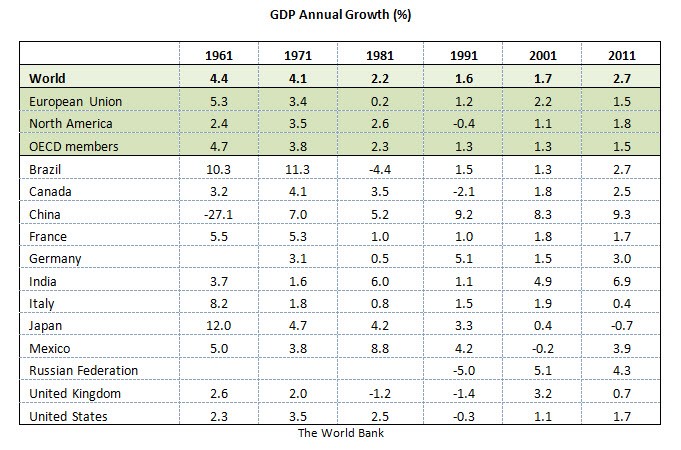As the world’s largest economy, attention is rightly focused on U.S. economic growth and gross domestic product (GDP). Now with additional attention on the country’s “fiscal cliff” — or gradual fiscal slide depending on the severity of economist projections — concern is growing that U.S. GDP will decline sharply in early 2013 and reverberate worldwide. Unfortunately, the timing of this occurs on top of better-than-expected U.S. GDP growth in the third quarter of 2% (second quarter to the third quarter), according to a U.S. Bureau of Economic Analysis advanced estimate in late October. In the second quarter, real GDP grew by 1.3%.[1]
U.S. GDP grew by 1.7% in 2011, a rate that pales in comparison to China (9.3%) and India (6.9%) and lags world growth (2.7%), but still hovers above OECD member nations (1.5%), according to the World Bank, which tracks annual percentage growth rate of GDP at market prices based on constant local currency; aggregates are based on constant 2000 U.S. dollars.[2]
In the past 50 years, U.S. GDP growth bottomed out in 2009, declining 3.5%. That drop was reflected in many nations and regions around the world (2.2% GDP decrease worldwide), with the notable exception of China (9.2% increase).[3] China GDP is predicted to pass U.S. GDP within the decade. Will the fiscal cliff accelerate that schedule, and will China have the same impact on U.S. and world fortunes going forward?


